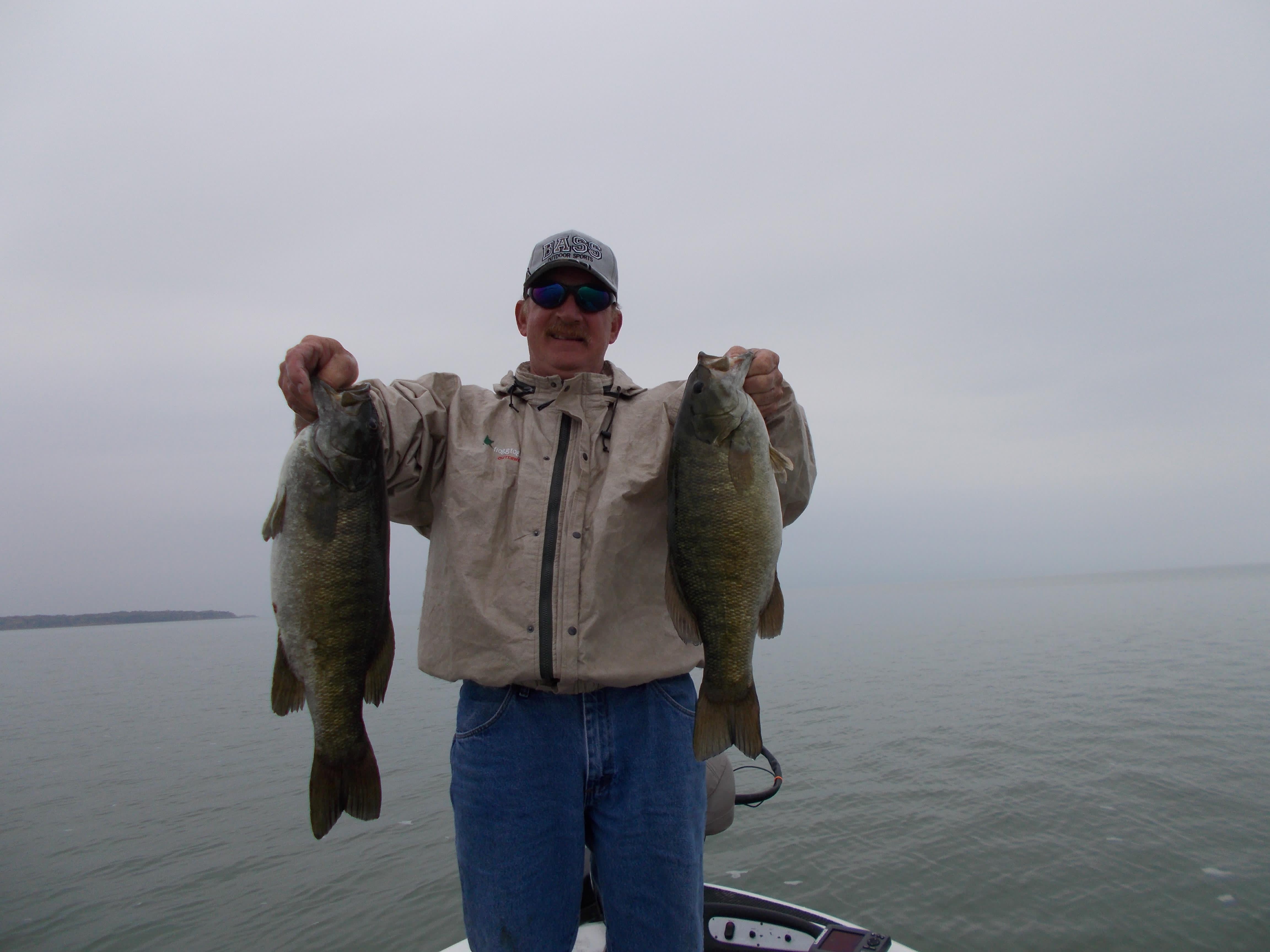Reeling in Smallies on the Saginaw Bay
Bob Gwizdz 10.15.12

My bait–a smoke-colored, curly tail grub on a 1/4-ounce jighead–was hung on some vegetation and when I popped it loose, I felt just the slightest tick. I set the hook and it got heavy.
It was a good fish, an olive-colored smallmouth bass that came out of the water three times before I brought it upside the boat. When I hoisted it aboard, I judged it at three-and-a-half pounds.
Bill Horton just shrugged.
“There’s better fish than that in here,” he said.
He showed me, too, but only briefly. Horton, who was fishing a drop shot rig with a four-inch Gulp smelt, set the hook on a fish that put a bend in his rod like a question mark. When it came out of the water, I guessed it at six pounds. But when it came out a second time, right at the boat, it spit the hook right back at Horton.
He shrugged again.

“We’ll get another one,” he said.
Not like that, we wouldn’t. But after an hour, we’d put five fish in the boat and all were excellent fish–three and four pounders–and jumped off a few more.
We were fishing a line of rocks in seven feet of water out where Saginaw Bay becomes Lake Huron. It’s a place that holds fish all the time, Horton said, but the big fish are only in there about three weeks a year, from mid-September through the first week on October.
“I don’t know what it is that brings them in here,” Horton said. “It’s probably when the bait fish move in. There’s a ton of bait fish in here right now. But I found them a couple of weeks ago and it’s probably getting near the end.”
Horton moved us a mile or so, where the water was a little deeper and the bottom was covered with slabs of shale. We caught eight fish over the next hour, drifting with the wind fishing from nine to 11 feet with tubes, grubs and drop shots. The fish, which were scattered, were all nice, all around two pounds or more, but not like at the first hole.
“They’re all dinks,” Horton said, “Let’s get out of here.”
We went back to where we started and caught two more but neither were the size of the fish we’d caught earlier.
“The big ones have already started to move out of here,” he said.
An auto worker who guides bass fishermen on weekends when he isn’t fishing tournaments, Horton said he caught one that beat seven pounds a week earlier. He showed me a photo. Awesome fish.
We moved again, this time about five miles, out to an area where the shale came up to within two feet (or less) of the surface. Horton kept us on the edge of the slab rock , which in the clear water resembled the bottom of a bed rock trout stream, and we cast in both directions, shallow and deep. Caught fish in both directions, too.
These were better fish than we’d left, three, four and five pounders. Horton hooked another giant, but, like his first hook-up that morning, it wasn’t of a mind to be hauled aboard.

I stuck a big one, but it didn’t act like a bass. And it wasn’t–it was giant sheepshead. Two casts later I hooked another good fish, but this one wasn’t a bass, either. It was a walleye, in the four-pound class. That fish took up temporary residence in the live well, en route to the dinner table.
Horton caught a largemouth–a nice fish, but smaller than the bulk of the smallmouths. He said he knew where we could find more bigmouths, but the smallies were of a better average size. That’s usually the case in Great Lakes waters, in my experience.
The wind got up a little bit and the sky to the west was taking on an ominous tone. Horton said he had one more place he wanted to hit before we got wet. But when we got there–a long rocky point coming off an island–there was a boat (one of only a half-dozen we’d seen all day long) anchored right where we wanted to fish.
So we called it (and it’s a good thing, too, because minutes after we got the boat on the trailer, the skies opened up). We’d caught 25 bass, all but one of which would go the requisite 14 inches had we wanted to keep ‘em. A pretty fair for a day when most everyone else of the sporting persuasion was likely in a tree stand, eh? Horton offered that if we wanted to try it again, he‘d be game.
“It’ll be good from now until there’s ice,” Horton said. “Last year I caught them out here all through December. You’ve got to pick your days–the wind makes it so that sometimes you can’t fish for two weeks at a time this time of year, But if you can get out here and the water clear; you can catch them.’
You can reach Horton at (989) 397-5053.
For more information on Michigan fishing go to michigan.org.

